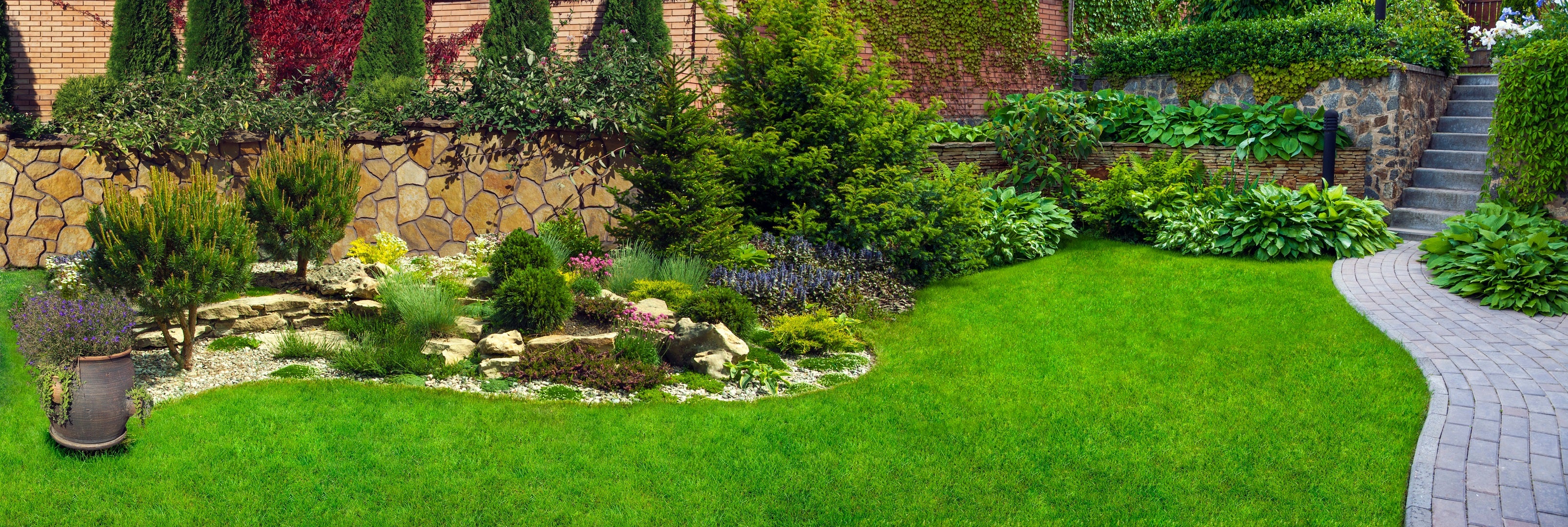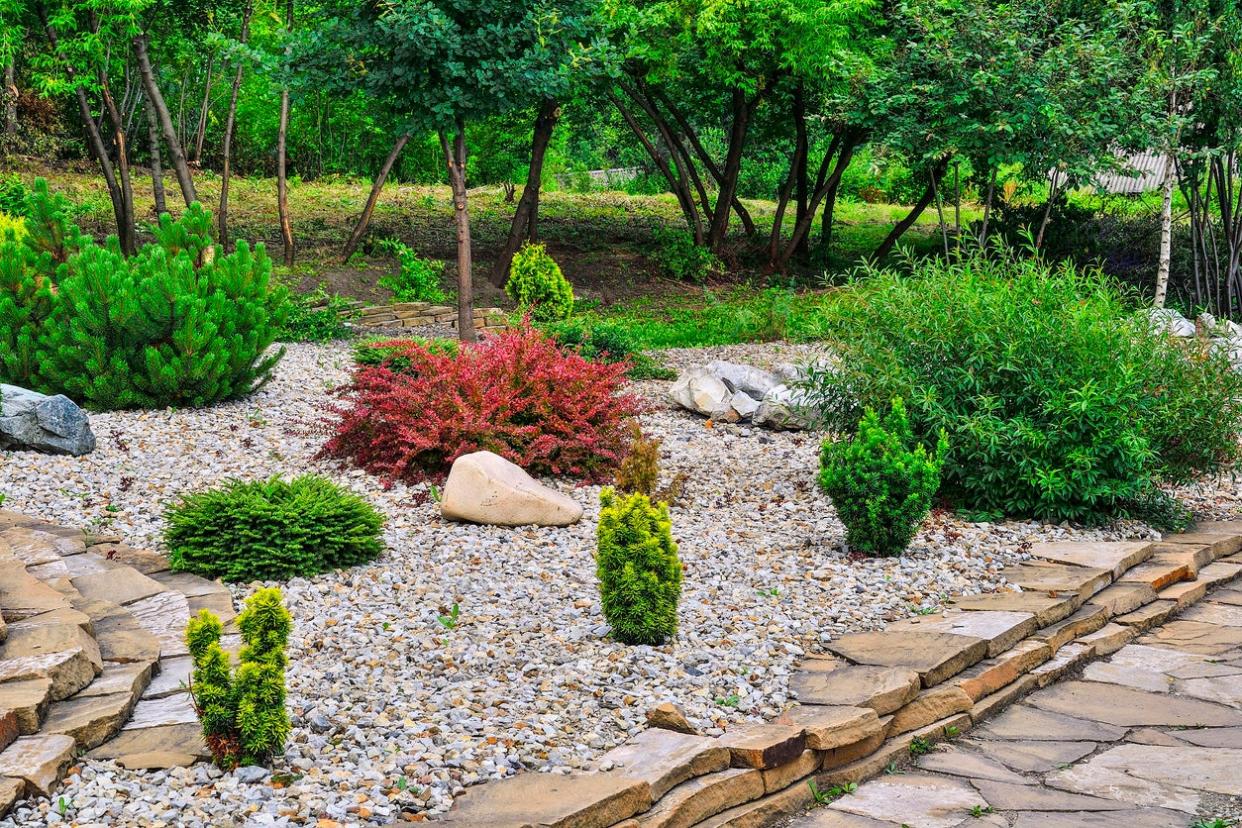Comprehend the Relevance of Sustainable Practices in Modern Landscape Design Services
Lasting techniques in modern-day landscaping are progressively acknowledged for their important function in environmental conservation. By implementing green techniques, landscape design experts can enhance biodiversity and decrease their eco-friendly footprint. This approach not only elevates home appearances however additionally promotes community wellness. As the need for greener services expands, the concern emerges: just how can these sustainable approaches improve the future of landscaping and our connection with nature?
The Function of Lasting Landscape Design in Environmental Preservation
While several may overlook the value of landscaping in ecological conservation, sustainable landscaping methods play a vital role in advertising ecological equilibrium. By focusing on native plants and lessening water usage, these methods help protect neighborhood biodiversity and minimize the stress on water sources. Furthermore, lasting landscaping can enhance dirt health and wellness via organic techniques, which promotes an extra resistant ecosystem.Moreover, integrating permaculture concepts improves land performance while reducing environmental effect. This approach motivates making use of all-natural parasite control and decreases reliance on chemical fertilizers, thereby shielding surrounding environments. Landscaping that concentrates on sustainability likewise adds to carbon sequestration, assisting to mitigate climate modification effects.Furthermore, environment-friendly landscape design creates habitats for wildlife, promoting a varied variety of types. By participating in sustainable practices, landscapers not just improve spaces yet additionally proactively join the bigger effort to protect the environment for future generations.
Benefits of Eco-Friendly Practices for Landscape Design Professionals
Green techniques in landscape design offer various advantages for specialists in the field - Landscaping St. Louis MO. These methods not only add to a decreased ecological impact however additionally improve building worth and lead to long-term price savings. By adopting lasting strategies, landscape design professionals can produce a more practical future for both their companies and the world
Lowered Environmental Effect
As landscaping specialists increasingly embrace eco-friendly techniques, they add significantly to reducing the environmental impact of their services. Executing sustainable methods such as natural fertilizers, native plant choice, and effective watering systems decreases using harmful chemicals and preserves water sources. These methods not only improve soil health and wellness yet also support regional biodiversity by producing habitats for wild animals. By prioritizing using renewable resources and reducing waste, landscape design specialists can substantially reduce their carbon footprint. In addition, integrating eco-friendly modern technologies, such as solar-powered devices, better reduces dependence on fossil fuels. In general, these green strategies promote a much healthier ecological community, demonstrating the essential role that sustainable landscape design plays in environmental stewardship.
Improved Residential Or Commercial Property Worth
Investing in sustainable landscaping techniques can substantially boost home value, with research studies suggesting that homes with properly designed green rooms can see a rise of up to 15% in market price. Eco-friendly landscapes not just attract possible customers but additionally produce an enduring impression that stresses a commitment to ecological stewardship. Attributes such as native plants, water-efficient watering systems, and absorptive paving add to visual appeal while lowering maintenance costs. In addition, residential properties with sustainable landscaping usually have reduced water consumption and energy expenses, including to their attractiveness. As awareness of environment adjustment and sustainability rises, purchasers progressively focus on homes that mirror eco-conscious worths, making lasting landscaping a strategic financial investment for building owners seeking to maximize their return.
Long-Term Cost Cost Savings
Lasting landscape design practices provide significant long-term expense financial savings for experts in the industry. By making use of indigenous plants and drought-resistant landscape design, specialists can minimize water usage and reduced irrigation prices. In addition, using natural fertilizers and pest control approaches reduces chemical purchases and advertises healthier soil, leading to minimized upkeep expenses gradually. Carrying out efficient energy sources, such as solar-powered lighting, in addition decreases functional expenses. Furthermore, lasting practices usually bring about less repairs and replacements due to making use of sturdy materials and styles that endure environmental challenges. By investing in environmentally friendly techniques, landscaping specialists can not only improve their solution offerings but additionally delight in continuous financial savings that add to their total productivity and sustainability in a competitive market.

Water Conservation Strategies in Landscape Design
Effective water preservation strategies are essential in landscaping, particularly in regions encountering water scarcity. One famous technique is the application of xeriscaping, which uses drought-resistant plants and lessens the requirement for extra irrigation. In addition, using drip irrigation systems can substantially minimize water waste by providing moisture directly to the plant origins. Rain harvesting is one more efficient method, permitting house owners to accumulate and save rainwater for landscape usage. Dirt moisture sensors can further enhance water efficiency by monitoring dirt conditions and notifying irrigation schedules. Mulching is also useful, as it helps maintain soil moisture while subduing weeds. Ultimately, landscape developers are encouraged to create contour gardens that promote natural water drainage and reduce runoff. By embracing these water conservation techniques, landscaping services can add to lasting practices while making certain that plant thrives also in water-limited atmospheres.
Promoting Biodiversity With Native Plant Choice
A diverse variety of indigenous plants can substantially improve biodiversity in landscape design projects. By picking plants that are aboriginal to a particular area, landscapers can create settings that promote an equilibrium of communities. Native plants are adjusted to neighborhood environment problems and dirt kinds, calling for much less water and upkeep contrasted to non-native species. This adjustment motivates the existence of native wild animals, such as pollinators, birds, and useful insects, which rely upon these plants for food and habitat.Furthermore, indigenous plants play a crucial function in soil health by reducing erosion and boosting vitamins and mineral biking. By promoting a range of varieties, landscapers can create resilient landscapes that are better outfitted to find out here withstand pests and diseases. Subsequently, this technique sustains the overall wellness of the atmosphere, contributing to sustainability. Stressing native plant option not just enhances spaces yet additionally cultivates eco-friendly honesty, making it a significant facet of contemporary landscape design techniques.
Waste Reduction Strategies in Landscape Maintenance
Carrying out waste decrease approaches in landscape maintenance can significantly reduce environmental effect while making best use of source effectiveness. One effective strategy involves composting organic waste generated during upkeep activities, such as turf trimmings and pruning particles. This practice not just draws away waste from land fills but additionally improves dirt health and wellness. In addition, utilizing mulch efficiently can decrease the need for chemical fertilizers and watering, consequently saving resources.Another approach is to adopt precision landscape design strategies, which concentrate the original source on targeted applications of water and nutrients based on certain plant requirements. This reduces unneeded waste and boosts plant health and wellness. Executing a regular maintenance schedule can additionally minimize over-pruning and excessive waste generation. In addition, selecting resilient products for landscape design tasks assurances longevity, eventually lowering the regularity of substitutes. Jointly, these methods add to a much more lasting technique in landscape maintenance, promoting a healthier environment while reducing overall waste manufacturing.
The Aesthetic Influence of Sustainable Landscaping
While standard landscaping often prioritizes aesthetic appeals over environmental factors to consider, sustainable landscaping harmonizes beauty with eco-friendly duty (St. Louis MO landscaper). This method embraces native plants, which not only thrive in regional conditions however additionally support regional wildlife, boosting the general visual allure of a landscape. By using organic products and eco-friendly style methods, lasting landscaping creates vivid spaces that mirror the natural environment.Furthermore, the unification of components such as rain gardens and permeable paving not only boosts aesthetics however likewise adds to effective water administration. The use of sustainable methods can cause distinct and inviting outside areas that urge biodiversity and foster a feeling of place.Ultimately, lasting landscaping goes beyond mere aesthetic charm; it cultivates a gratitude for nature while advertising environmental stewardship. This combination of beauty and sustainability not just boosts the landscape yet likewise motivates a greater connection between individuals and their setting
Community Involvement and Education And Learning in Sustainable Practices
Sustainable landscape design not just boosts the aesthetic allure of outside spaces but additionally works as a system for community interaction and education. With workshops and regional initiatives, landscape design solutions can cultivate link a much deeper understanding of sustainable techniques among neighborhood members. These programs often highlight the value of native plants, water conservation, and natural gardening strategies, enabling participants to gain hands-on experience.Moreover, neighborhood yards play a vital role in promoting sustainability while giving a shared room for communication. Such efforts motivate collaboration and the exchange of ideas, producing a sense of possession and duty among individuals. By integrating educational components right into their solutions, landscaping experts can properly bridge the gap in between ecological stewardship and community involvement. Ultimately, this engagement not only grows an extra informed public yet additionally enhances the cumulative commitment to sustainable methods, guaranteeing that these concepts are promoted for future generations.
Often Asked Concerns
What Are the Prices Connected With Carrying Out Lasting Landscaping Practices?
The prices connected with implementing lasting landscape design practices typically include first investments in environmentally friendly products, continuous maintenance expenses, and prospective training for personnel. Nonetheless, long-lasting savings and environmental advantages can outweigh these upfront prices.

Exactly How Can Home Owners Start With Lasting Landscape Design in the house?
Property owners can start lasting landscaping by assessing their yard, picking indigenous plants, applying efficient watering systems, composting organic waste, reducing chemical use, and incorporating mulch to retain dampness, inevitably promoting an environment-friendly outside atmosphere.
Are There Certifications for Sustainable Landscaping Professionals?
Different certifications exist for lasting landscaping professionals, including the Association of Professional Landscape Designers' certification and the Lasting Sites Campaign. These accreditations highlight environmental methods, promoting ecologically friendly landscape design techniques and enhancing professional credibility within the market.
Just How Does Environment Adjustment Affect Landscaping Practices?
Environment modification considerably affects landscaping methods by altering plant growth patterns, raising insect populations, and demanding using drought-resistant vegetation. Landscaping companies should adjust their strategies to ensure lasting and resistant outside environments.
What Plant kingdom Are Best for Low-Maintenance Sustainable Gardens?
The best plants for low-maintenance lasting yards consist of indigenous types, succulents, and drought-resistant selections. Landscaping St. Louis Missouri. These plants need marginal water, thrive in local problems, and assistance neighborhood environments, developing a resistant and eco-friendly garden